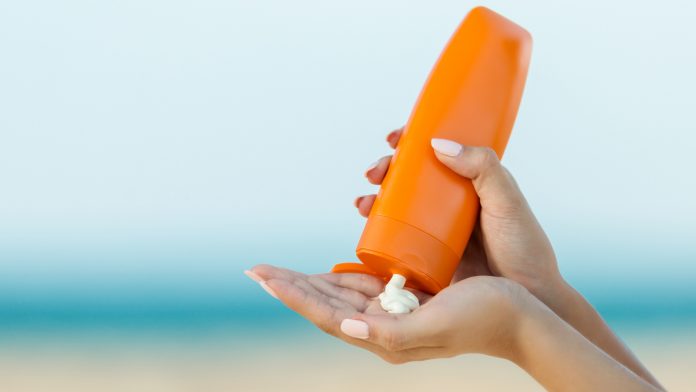
A discovery by the University of Bath illuminates a key ingredient missing from sunscreen products that can better protect against sun skin damage.
Research has revealed a key ingredient is missing from all sunscreens and anti-ageing creams, and the skin will have improved protection from sun skin damage. The damaging effects of the sun could be reduced by a rich source of natural photoprotection, which is an antioxidant.
The missing ingredient is a class of antioxidants that is commonly discovered in nature. Experiments have indicated that these antioxidant molecules eliminate excess iron in cells, therefore helping cells maintain a healthy level of free radicals (a type of unstable molecule). Free radicals and free iron are strongly linked to skin damage.
“By including these potent antioxidants in skin-care products and sunscreen formulations, and therefore trapping free iron,* we can expect to get an unprecedented level of protection from the sun,” said Dr Charareh Pourzand, who led the research from the Department of Pharmacy and Pharmacology, and the Centre for Therapeutic Innovation at the University of Bath.
These new findings into sun skin damage have been published in the journal Antioxidants.
Natural extracts for ageing
Scientists have known that iron deposits promote the appearance of ageing, but the latest study highlights the role of free iron and free radicals in the skin. As a result of their findings, Dr Pourzand urges skin-care manufacturers to look more closely at opportunities to include iron-trapping extracts in their products.
Several iron-trapping natural extracts have already been identified in the Bath lab, including several classes of botanical, fungal, and marine-based compounds, as well as extracts from certain vegetables. Dr Pourzand noted that more research is required before any of these compounds are fit for commercial purposes.
“Though the antioxidants we have identified work well in laboratory conditions, they do not necessarily remain stable once they have been added to a cream,” she said. “These extracts come from plants, and environmental factors affect their stability and long-term effectiveness – anything from the season in which they are grown, soil type, latitude and the time of harvest can change the strength by which they can neutralise free radicals as well as work as iron traps.”
She added: “What is needed now is for the bioactive chemicals in these extracts to be standardised – once that has happened, they can and should be added to products designed to protect the skin from ageing.”
Sun skin damage: protecting the skin
Sunscreens either block or absorb UV rays and they lower the number of free radicals that are created on the skin. These free radicals are unstable molecules that can cause skin damage and ageing, in a process known as ‘oxidative stress.’ Free radicals cause harm by damaging DNA and other cell components, and this sometimes results in cell death.
Iron has not been considered in products that reduce sun skin damage, including sunscreens and anti-ageing formulations, both in damaging skin directly when it interacts with UV radiation and amplifying caused by free radicals.
“This needs to change,” concluded Dr Pourzand. “Formulations need to adapt and improve.”
The antioxidant compounds identified at the University of Bath can protect from sun skin damage and chronological ageing.
The body needs iron to function properly, too much or too little is harmful or even deadly to our cells. Cells protect themselves from this danger by adjusting excess iron when it builds up, therefore, bringing it back to a state of balance, known as homeostasis. In the presence of sunlight, this balance is disrupted, leading to sun skin damage, ageing, and sometimes cancer.
Chronological ageing also contributes to iron levels falling out of balance, especially in women after menopause, meaning older people (and particularly older women) are more vulnerable than others to sun skin damage.









